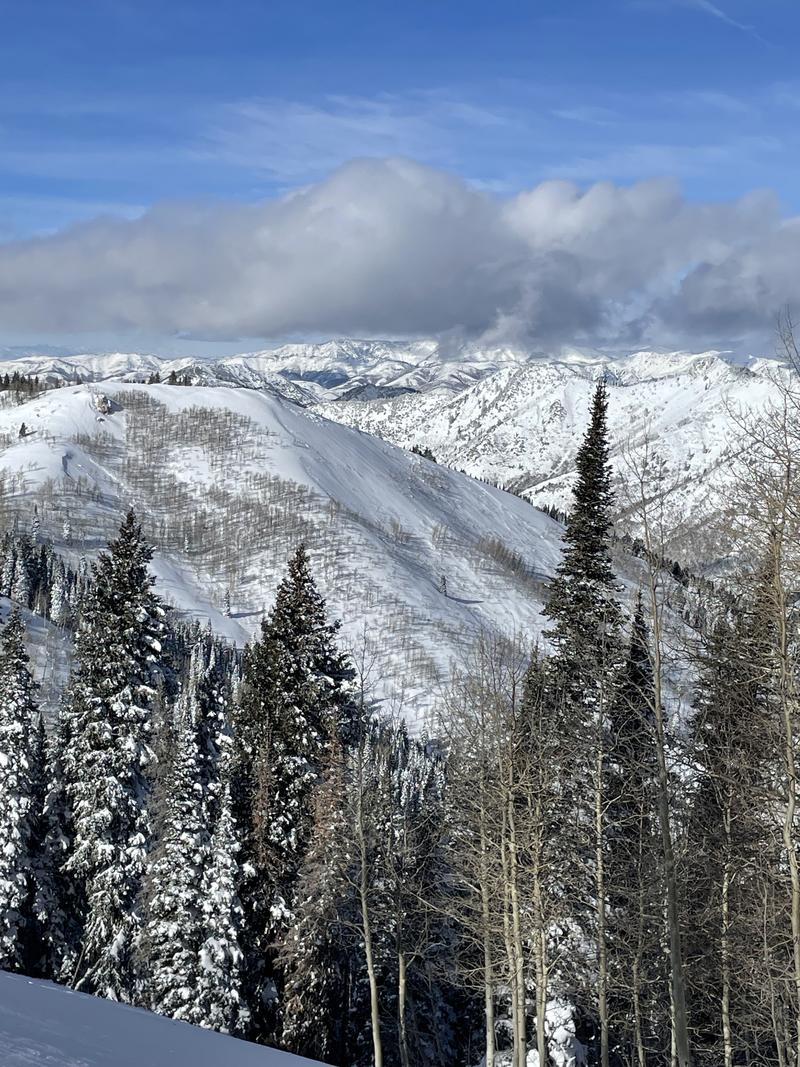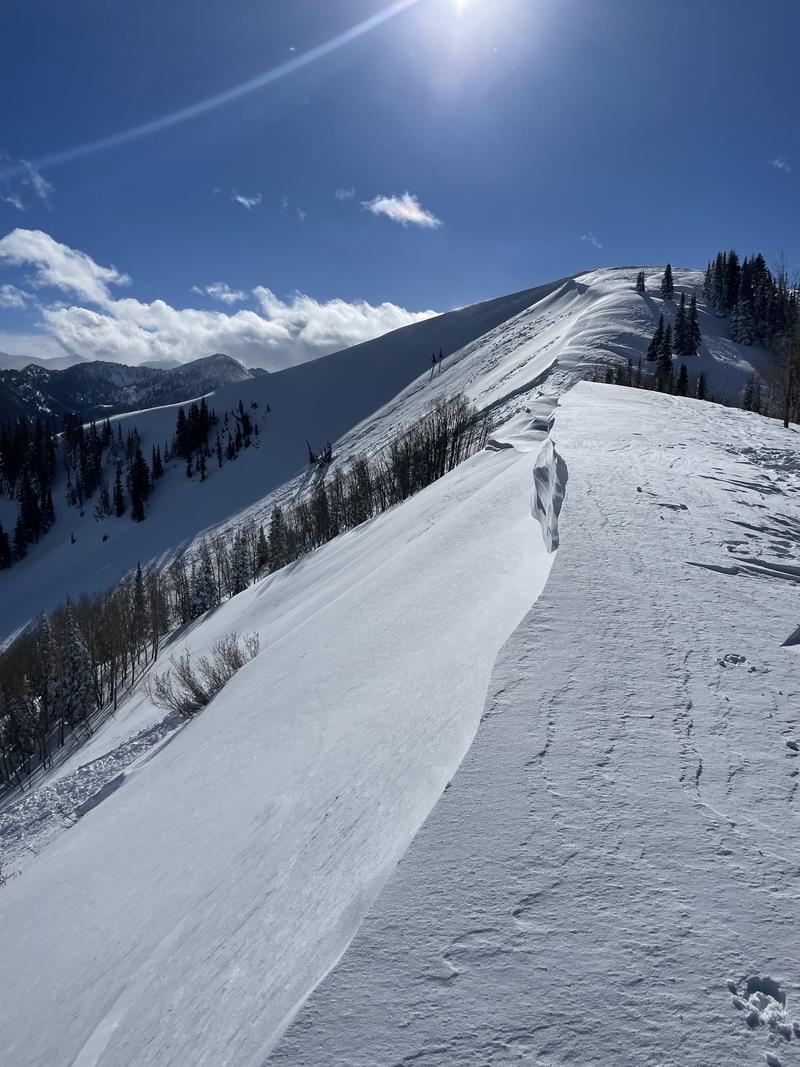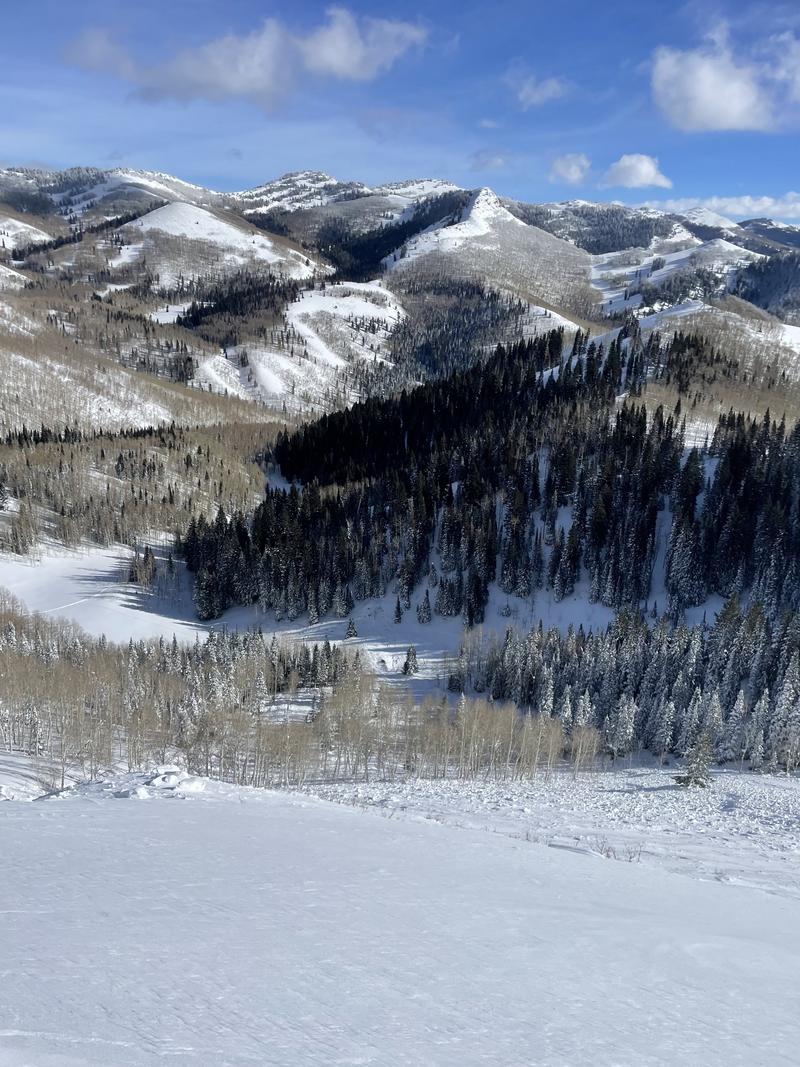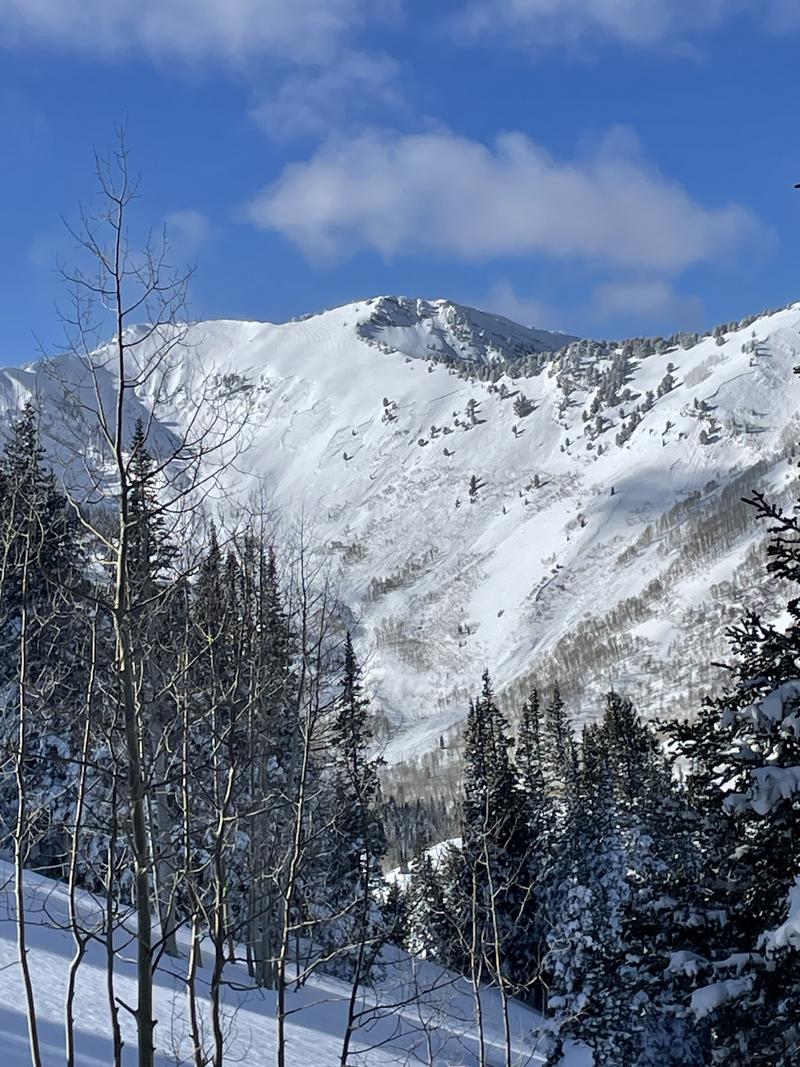The persistent weak layer remains the primary concern. Elevated winds and new snow present their own challenges, adding to the existing issues with the weak snow at the base of our snowpack. The introduction of significant stressors, in the form of water weight and wind, has led to the burial of this weak layer at depths ranging from 2 to 6 feet.
The potential danger arises if a slab of wind-drifted snow or new snow fails, with the potential to propagate deeply into the snowpack, resulting in a deadly avalanche. The persistent weak layer remains the primary concern for that reason, even if the number of avalanches failing into the faceted snow is not as evident.
The challenge with persistent weak layers lies in their subtle presence within the snowpack, not always offering obvious clues. In the next day or two, less obvious signs of instability may emerge, but the risk of dangerous avalanche conditions will persist on this layer.
Even as the danger decreases, I am personally going to avoid riding in avalanche terrain where I know that this persistent weak layer exists.










